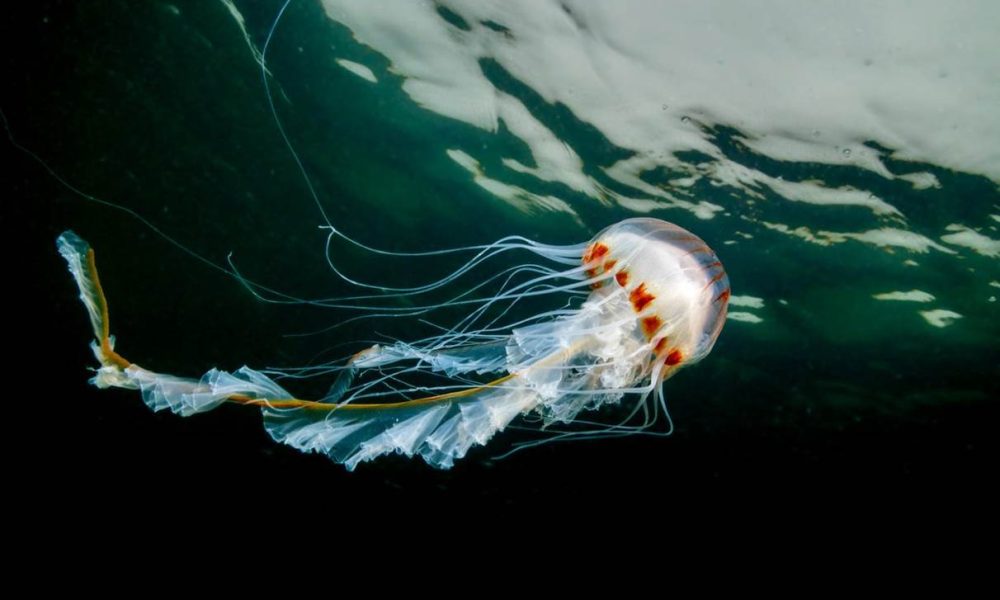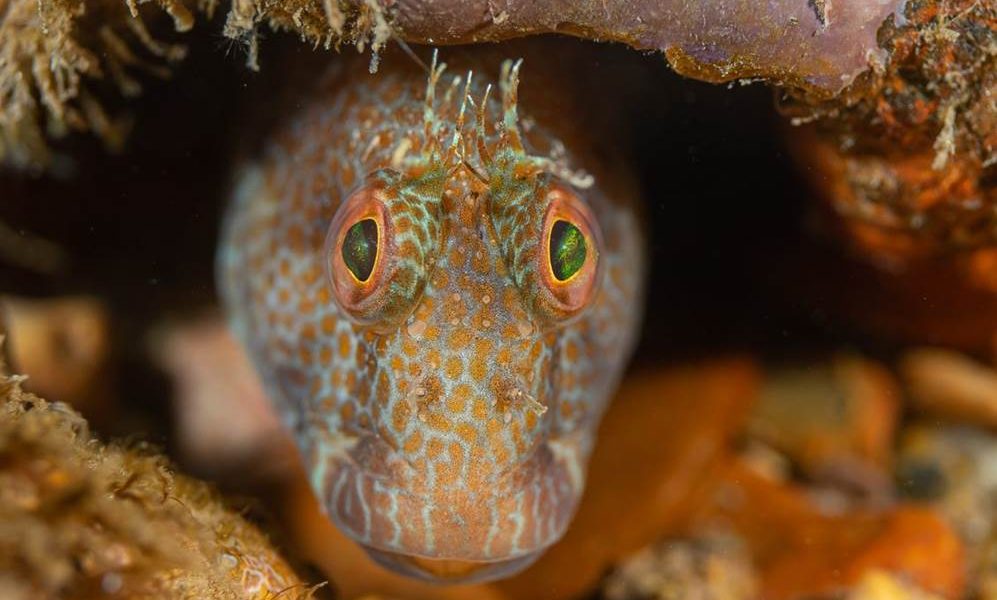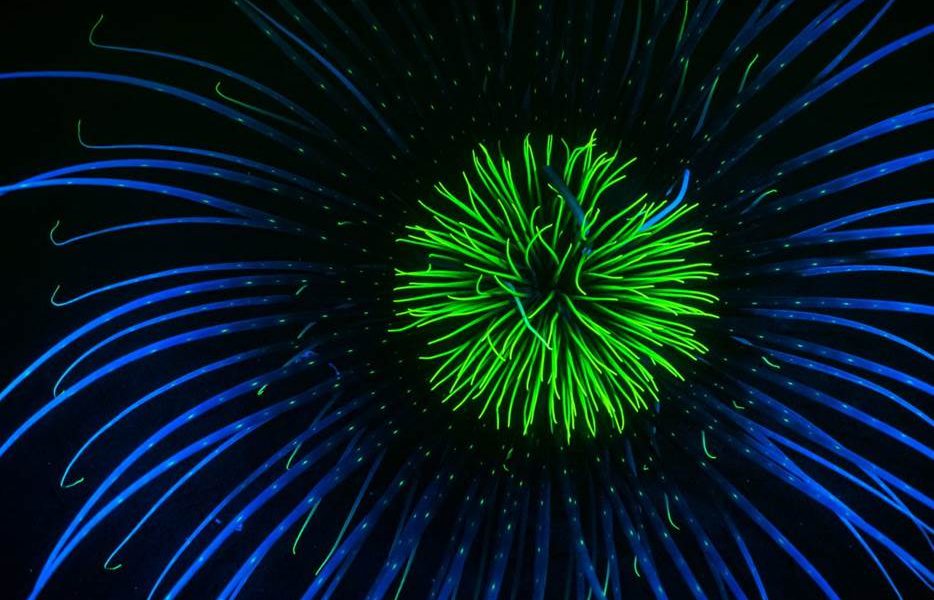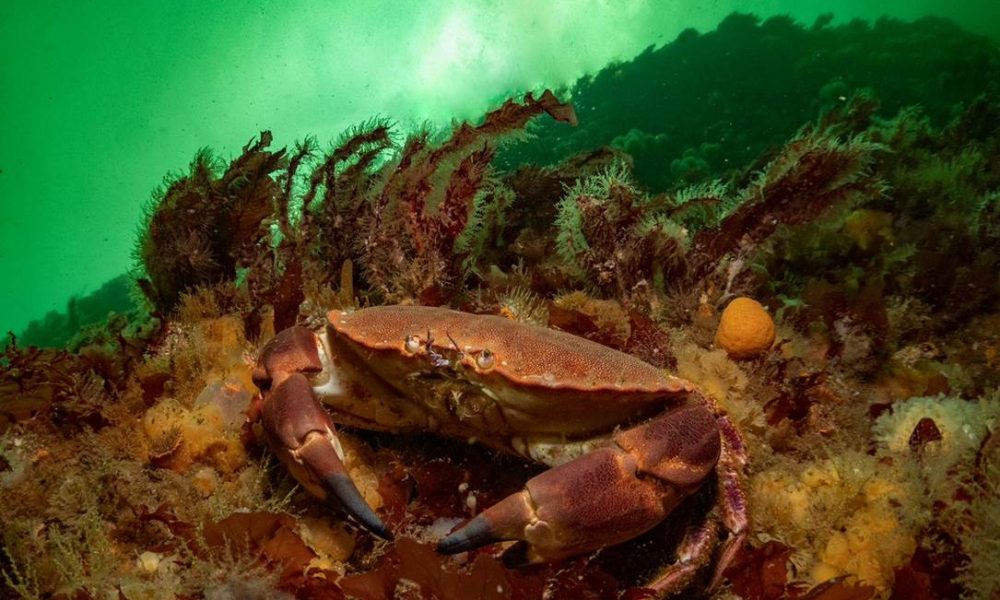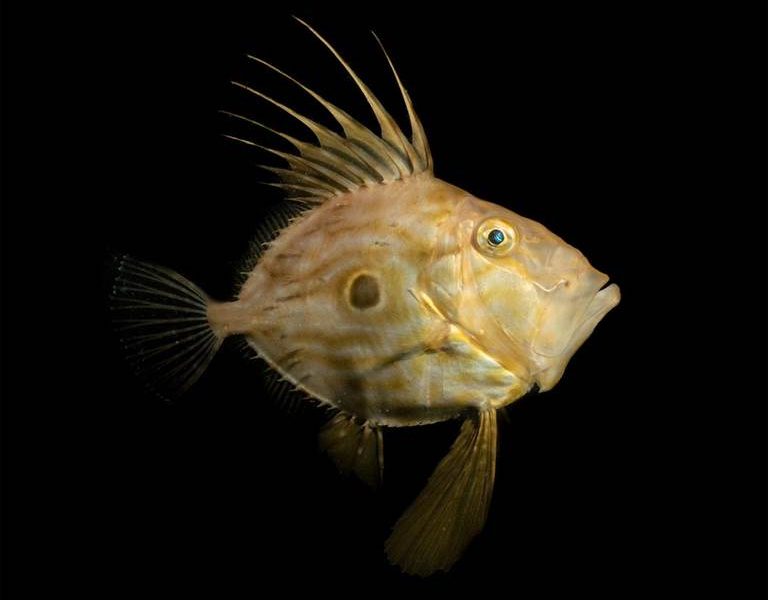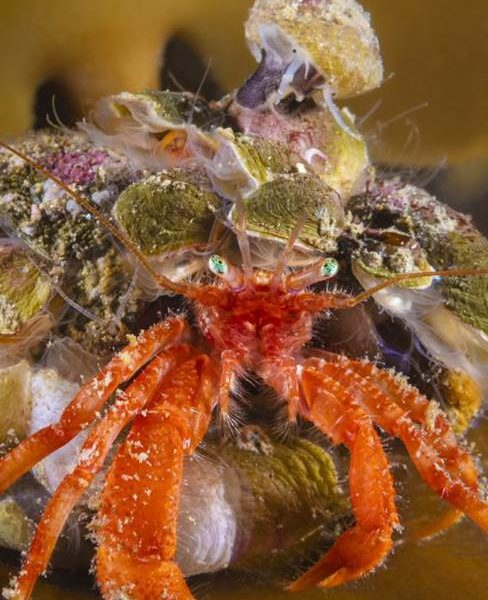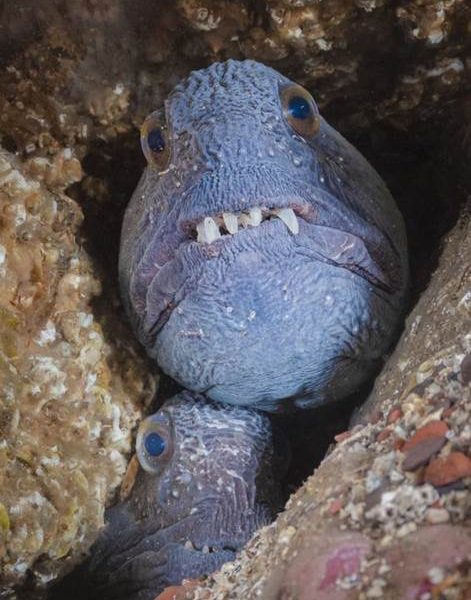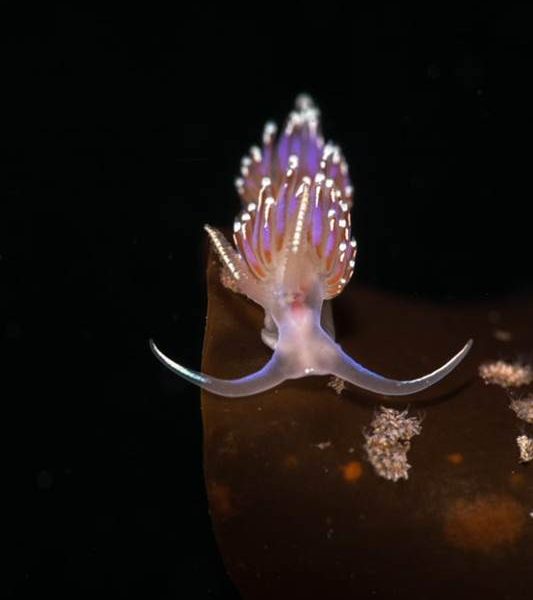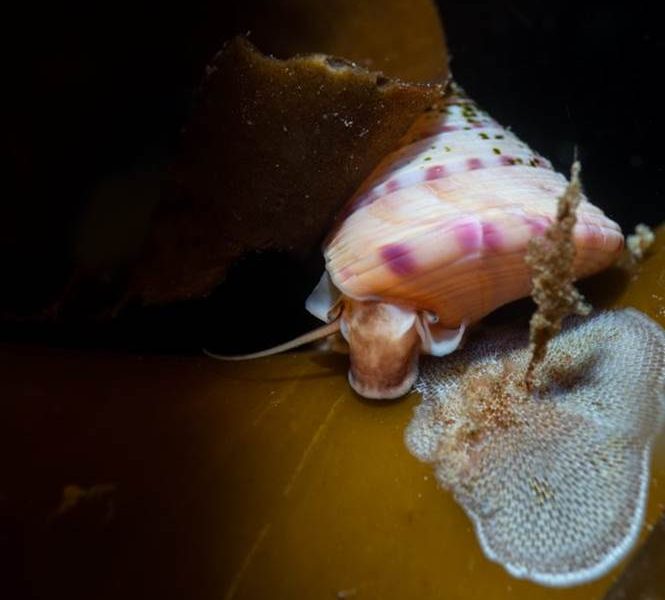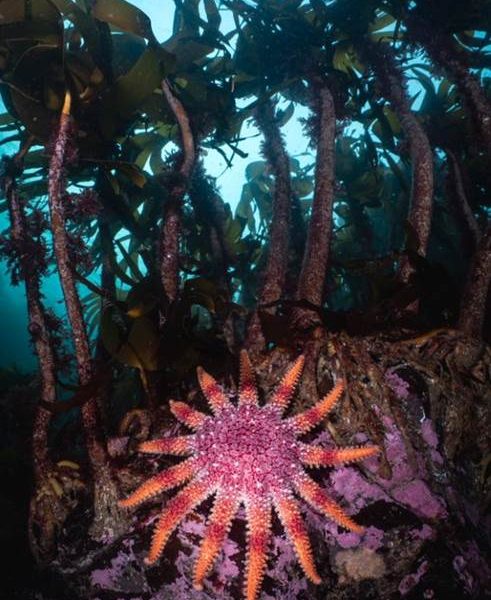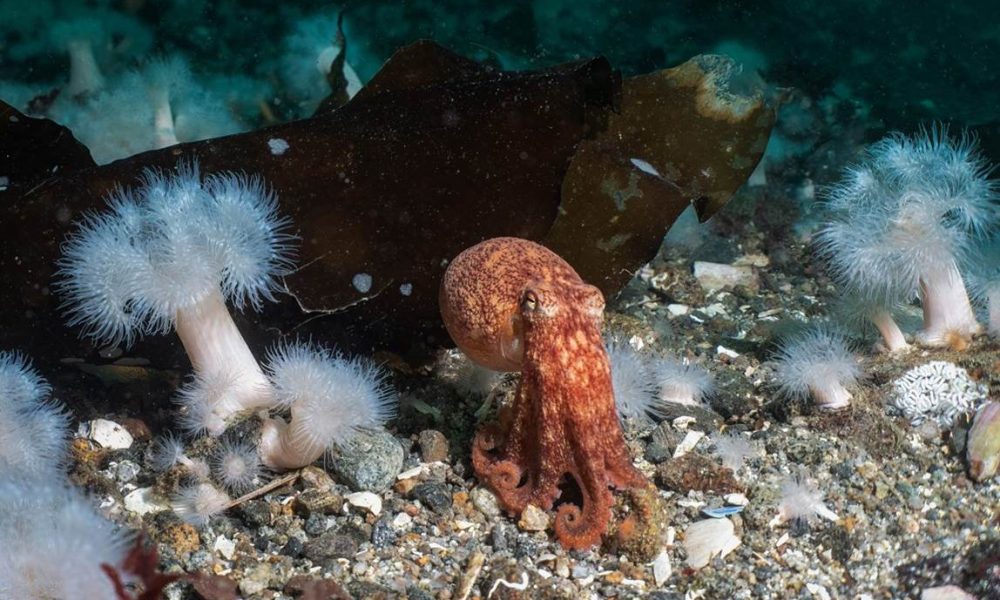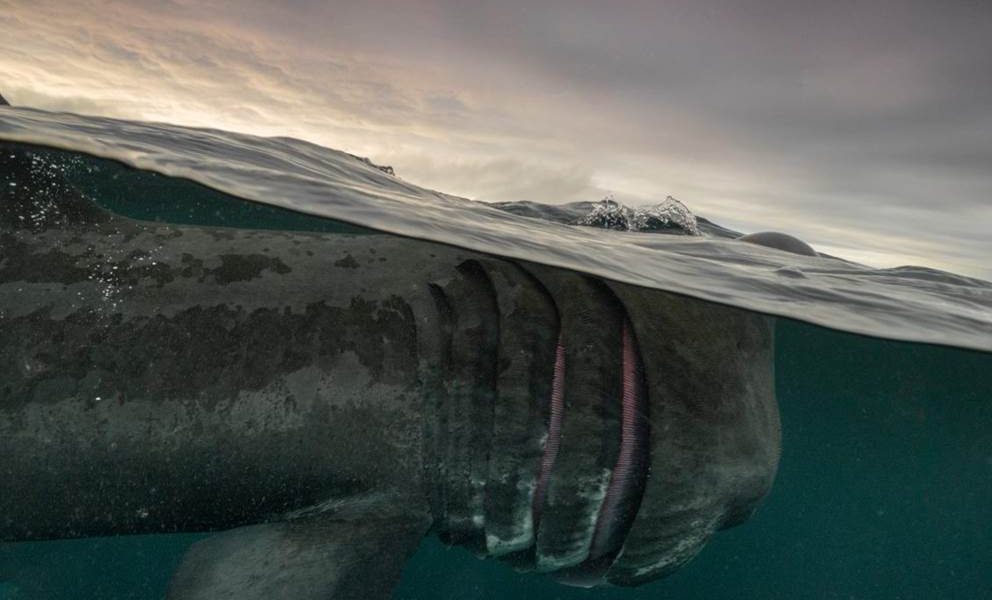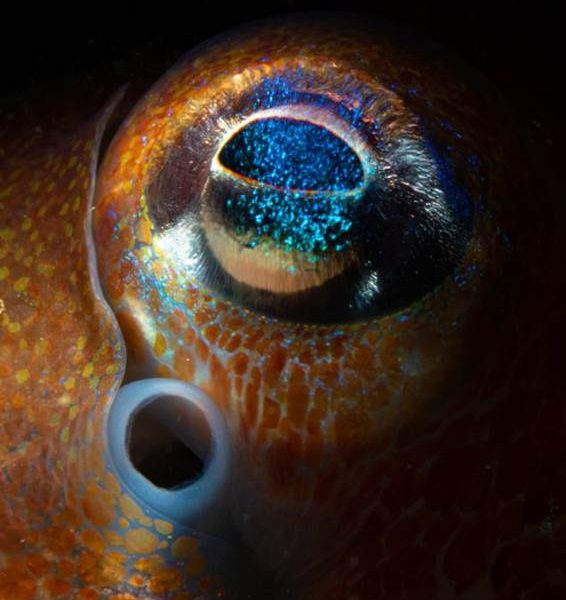Marine Life & Conservation Blogs
World Wildlife Day: incredible UK sea life in pictures
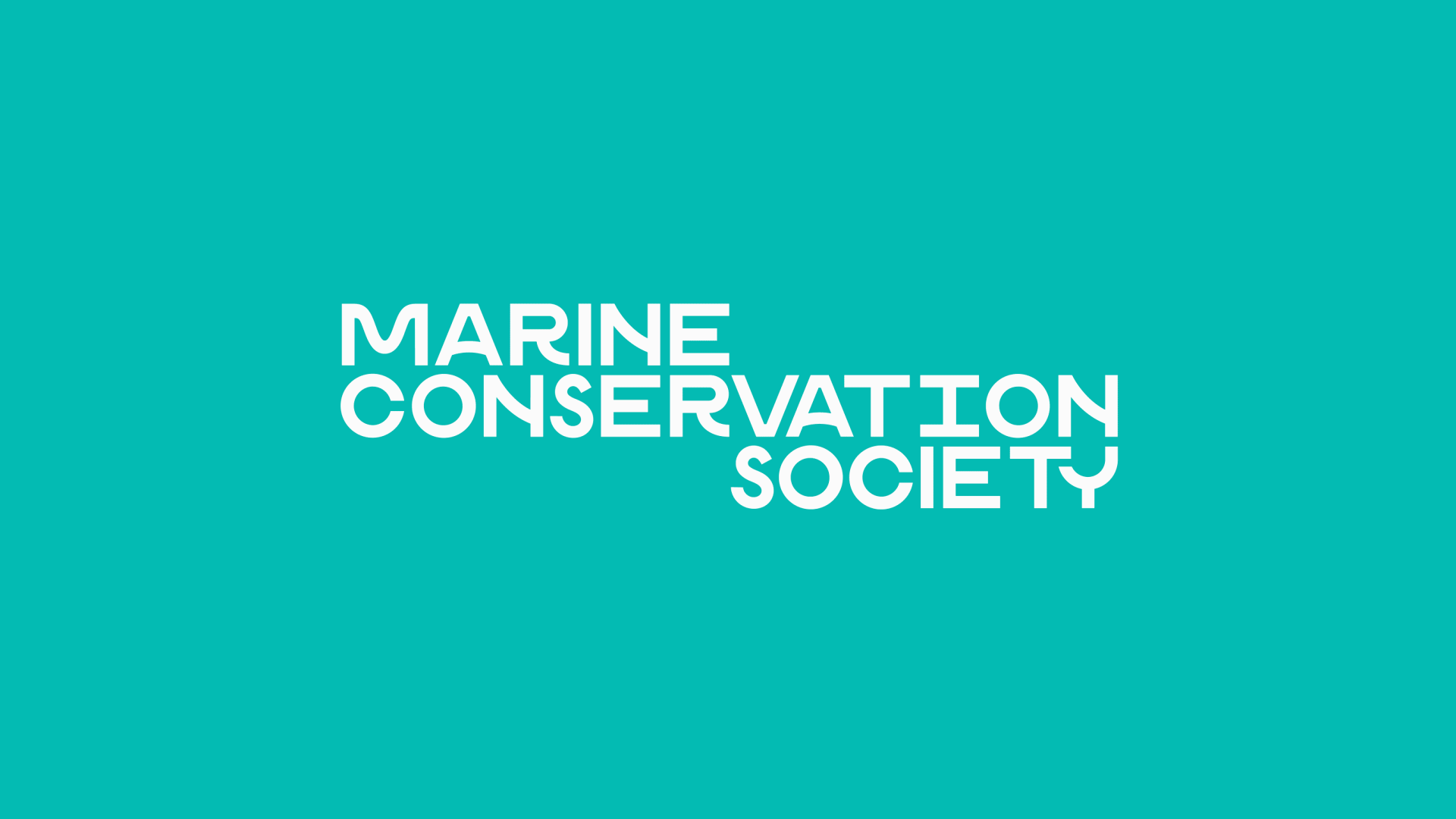 Today is World Wildlife Day. The Marine Conservation Society have compiled incredible underwater photography from UK seas, showcasing how special our wildlife is.
Today is World Wildlife Day. The Marine Conservation Society have compiled incredible underwater photography from UK seas, showcasing how special our wildlife is.
Seasoned underwater photographers share how they captured amazing scenes of UK wildlife; get inspired to dive in yourself. While the images below show the colourful and curious world under the surface of the UK’s seas, these fragile ecosystems are in urgent need of protection and restoration. Without a healthy ocean, we cannot have a healthy planet.
- Anglerfish, Lophius Piscatorius, Chesil Cove, Dorset by Jon Bunker – “Among the most beautiful of our ground-dwelling fishes, the angler fish’s mottled brown tones and leafy protrusions of skin make it almost undistinguishable from the rocky, weed strewn ground that divers often encounter them in. Broad circular pectoral fins seem to grip the seabed like clasping hands on either side of the massive, dustbin-lid head. Ahead of a decreasing series of weed-like dorsal spines, the anglerfish wafts its distinctive lure or ‘illicium’ to entice unwary prey into its cavernous mouth.”
- Basking Shark, Isle of Coll by Mark Kirkland – “Through late summer the basking shark passes though the Isles of Coll and Tiree in huge numbers on its migratory journey north. Despite being the second largest fish in the sea (up to nine meters long) and a close relative to the great white shark, it’s completely harmless, with a preference for microscopic plankton as it’s food. This split shot was taken on a glorious evening’s snorkel with three large individuals.”
- John Dory, Dorset by Georgie Bull – “I have always had a soft spot for John Dory. When I first started diving in Dorset, we were gifted with many summer nights full of John Dory. I hadn’t seen one for years, but this summer they returned in good number, and I spent a good 10 minutes with this individual who was very keen to check themselves out in the reflection of my dome lens.”
- Firework anemone (Pachycerianthus multiplicatus), Inverary, Loch Fyne by Dan Bolt – “As the UK’s biggest anemone, the Firework anemone can have a stalk and tentacles of up to 30cm long. Usually restricted to deeper waters, in many western Sea Lochs in Scotland they are accessible to sport divers. These beautiful creatures also have a party trick: under UV light they fluoresce and emit blue and green light and display patterns not seen under daylight.”
- Edible crab, Ar. Abbs, Berwickshire marine reserve by Georgie Bull – “Over the summer I visited St. Abbs and was blown away by how many crabs and lobsters there were. The Berwickshire Marine Reserve is a very special place to dive because it is a voluntary no-take zone. Many of the marine animals here have no need to fear divers and exist in higher numbers than outside of the reserve.”
- Variable blenny, Babbacombe, south Devon by Dan Bolt – “The variable blenny is a relative newcomer to UK waters, arriving from the Mediterranean as a summer visitor some years ago, but is now firmly established in Babbacombe all year round. As their name suggests they are variable in colour, not only between male and female, but also when either mating or looking after a clutch of delicate eggs for weeks at a time.”
- Compass jellyfish, Falmouth, Cornwall by Martin Stevens – “The jellyfish is a compass jellyfish, smaller individual from Falmouth, Cornwall in springtime. A nice encounter with a great species, locally. Taken under overcast skies, moody weather, one of the first compass jellyfish of the year.”
- Curled octopus, Toft pier, Shetland Islands by Billy Arthur – “Instantly a great dive when an octopus encounter is involved! Being quite sheltered and having lots of prey available for them, this site is a hotspot for curled octopus. It was already watching me when I finally noticed its presence, which is nearly always the case with these masters of camouflage. The plumose anemones which carpet the seabed in patches make it a very special place.”
- Painted top-shell, Boddam, Shetland Islands by Billy Arthur – “One of the prettiest molluscs we find up here on the Shetland islands. This one looks to be feeding on a sea-mat which is a type of bryozoan which encrusts kelp fronds. Their stunning shells, which swash up on our beaches, are a prized find for beach combers, but they are much more stunning when alive. If you look closely, you can see its eye poking out from under the shell.”
- Facelina auriculata, Lunna, Shetland Islands by Billy Arthur – “An absolute stunner of a nudibranch (sea slug)! Not as common as some of the other species we find here in Shetland, which makes them even more special. Caught by the sun’s rays they almost seem to sparkle. It’s amazing that such tiny, delicate creatures can survive in the wild seas around Shetlands coastline. Our kelp forests around Scotland are rich with life, the biodiversity in these forests is breath-taking and we need to protect them!”
- Pair of wolf fish, Berwickshire marine reserve by Kirsty Andrews – “The Berwickshire marine reserve on the Scottish borders is the most reliable spot for UK divers to see charismatic wolf fish in their rocky lairs. They usually live singly but on one September trip, I spotted five separate pairs huddled together in different rocky hollows. Clearly, love is in the air for wolffish in the Autumn.”
- Hermit crab and other molluscs on kelp, Shetland by Kirsty Andrews – “The closer you look, the more you see. I was drawn to this tiny but colourful hermit crab on a piece of kelp in the shallows in Shetland, but I didn’t appreciate until I looked closer that its shell was in turn covered in life, such as lampshells, pink encrusting algae and at the very top, a topshell. Quite the vibrant community.”
- Bobtail Squid, Loch Long by Mark Kirkland – “As winter creeps in, the tiny Bobtail Squid rises from the depths of the sealochs to breed. Through September and October, they can be found in depths as shallow as ten metres. Often no larger than a golf ball, a macro lens is preferable to get the glorious and colourful details. This shot shows an eye and siphon.”
- Common Sunstar, Levenwick, Shetland Islands by Billy Arthur – “Typical rocky Shetland reef capped with a beautiful forest of kelp. This large common sunstar seemed to be making its way up into the kelp forest, likely in search of food. A beautiful starfish but also a voracious predator and scavenger. Once their prey has been caught by one of its many arms, they extrude their stomach out of their mouth and partially digest the meal, a gruesome end.”
To learn more about the Marine Conservation Society’s work, and how to get involved with the Seasearch project, please visit the charity’s website: Marine Conservation Society | Home (mcsuk.org)
Blogs
Saba’s Plan for a Coral Comeback

Saba has an exciting new initiative to restore its coral reefs. This new project, running from 2024 to 2026, will focus on reviving key species in the island’s underwater ecosystems. With a collaborative team from the Saba Conservation Foundation (SCF) and Van Hall Larenstein (VHL) University of Applied Sciences, the project aims to restore both corals as well as sea urchins.
This initiative is centered around coral restoration, specifically reviving two essential coral species—staghorn coral (Acropora cervicornis) and elkhorn coral (Acropora palmata). By mapping parent colonies and using a technique known as coral gardening, SCF will create and maintain coral nurseries. These corals will eventually be outplanted at key reef sites around Saba to not only expand the number of coral colonies, but also provide essential fish habitat. The project focusses on installing coral nurseries, training staff with the newest techniques and starting with the restoration of key reef sites.

Reef Cleaners to the Rescue
It’s not just corals getting a makeover—this project also shines a spotlight on the essential role of grazers, particularly sea urchins. VHL is leading the charge on cultivating and restocking two key sea urchin species, West Indian sea egg (Tripneustes) and long-spined sea urchin (Diadema), known for their ability to keep algae in check. By removing algae, which are important competitors of corals, they help the coral to thrive. By restoring these “reef cleaners,” Saba’s project will give corals the breathing room they need to grow, setting the stage for a healthier, more balanced marine ecosystem.
From Tiny Urchins to Big Goals
The project will be funded as part of the Dutch Government’s Nature and Environment Policy Plan (NEPP) 2020-2030 for the Caribbean Netherlands, a comprehensive initiative aimed at conserving and restoring the unique natural environments of the Dutch Caribbean islands, including Saba, St. Eustatius, and Bonaire. This project is aiming for big milestones: build and maintaining coral nurseries, the expansion of urchin cultivation facilities, and the creation of a dedicated research center. By 2026, the project hopes to ramp up coral and grazer restoration, with the ultimate goal of extending these efforts across the Dutch Caribbean. By linking local initiatives to broader regional goals, Saba’s restoration project promises to leave a lasting impact on both the environment and the community.
Find out more about the DCNA at dcnanature.org.
Blogs
Reef-World marks two decades of marine conservation: strengthening impact amid coral reef threats

Empowering ocean stakeholders to tackle future challenges and ensure the survival of coral reefs and humanity
2024 marks the 20th Anniversary of The Reef-World Foundation’s tireless efforts for global coral reef conservation. The UK charity is the international coordinator of the UN Environment Programme’s Green Fins initiative, known as the leading voice in sustainable marine tourism. Today, Reef-World released its 2023-2024 Impact Report outlining a year of substantive growth and impact in its marine conservation programmes.

Impact Report Highlights:
- Impressive improvements in environmental behaviours to protect coral reefs by the marine tourism industry as the global participation of Green Fins increases.
- Continued capacity building for government and NGO staff to effectively manage marine tourism activities in Asia, Caribbean and Red Sea regions.
- For the first time in Green Fins’ 20-year history, tourism operators have achieved ‘Best Environmental Performer’ status by demonstrating the lowest possible environmental impact in their environmental assessments. In 2024, three dive operators achieved this challenging milestone.
- Significant increases in global participation of Reef-World’s innovative digital conservation tools.
- 138 Green Fins dive operator members achieved the strict threshold for PADI Eco Center recognition.
- Developed four new educational materials and translated two into 16 languages to support the marine tourism industry in achieving sustainability targets.
- Establishing a new Reef-World Development strategy and recruiting new roles – Development and Programmes Managers.
- Reef-World’s board welcomes new Chair and Trustees strengthening organisational leadership.

Reef-World started as a one-person mission to inspire and empower communities to act in conserving and sustainably developing coral reefs and related ecosystems. Today, the team of 12 continues to meet this mission by inspiring and empowering the global marine tourism community to be exemplary sustainability leaders by using the Green Fins guidelines and tools to simultaneously use and protect the world’s precious reefs.
In April 2024, the fourth global coral reef bleaching event was confirmed. Reef-World’s work has never been more urgent as the marine environment, and the benefits they provide humanity, continue to be eroded by global threats. The reduction of local threats, like those from the marine tourism industry, is an essential step to ensuring a future where coral reefs survive and continue to support the millions of people who depend on their ecosystem benefits. Reef-World’s work buys time for coral reefs and related ecosystems to be resilient to the impacts of global threats.
“Right now our corals are facing the greatest fight of their existence as the terrifying predictions of the steps towards their complete extinction are starting to come true. But all is not lost, reefs are resilient and they have existed on this planet for millions of years. We must take action now, to buy time for reefs by reducing threats facing them and allowing them to react and adjust to the changing environment they need to survive in.” – Chloe Harvey, Executive Director
Looking Forwards:
Like coral reefs, the Reef-World team needs to be resilient in the face of the complex challenges of the conservation sector. Reef-World has invested significantly in developing a Culture of Care to ensure the well-being of its team on a daily basis, continuing to be an exemplary employer to enable its team to best achieve the mission for coral reef conservation.
With the foundations of a Culture of Care and organisational development laid, Reef-World is emerging from the end of a natural organisation life cycle, that brings the challenges of growth and scale, stronger than ever. With a new strategy in place to generate much needed resources, Reef-World is excited for the opportunities to leap forward, continue to scale our impact and lean into new innovations and untapped opportunities for marine conservation.
We continually strive to become a forward-thinking organisation that delivers on our goals and commitments to our stakeholders with fresh approaches and not being afraid of steering away from a “normal approach.” This approach is not only applied to our programmes of work but also internally and carries over to our Culture of Care for our team.” — JJ Harvey, Operations Director

The Reef-World Foundation is immensely grateful for the continued support of its grant funders: UN Environment Programme, IUCN’s Blue Natural Capital Financing Facility, Adventure Travel Conservation Fund, PADI Aware Foundation, and World Nomads Footprints Program.
Reef-World would also like to express its gratitude to international partners whose vital support has resulted in significant tangible benefits for our work and mission: PADI; Professional SCUBA Schools International (PSS); Explorer Ventures; 1% for the Planet; ZuBlu; Snorkel Venture, GSTC; Dive O’Clock; Seven Dragons; DiveAssure and Eco Beach, without whom these achievements would not be possible.
The full 2023–2024 Annual Impact Report is available on Reef-World’s website.
-

 News2 months ago
News2 months agoIconic SS United States to become the World’s Largest Artificial Reef
-

 News3 months ago
News3 months agoBook Review – 52 Assignments: Underwater Photography
-

 Gear News3 months ago
Gear News3 months agoDYNAMICNORD – New German diving brand enters the British market
-

 News3 months ago
News3 months agoExploring Cenote El Pit: A Diver’s Dream
-

 Gear News3 months ago
Gear News3 months agoTry BARE drysuits (and maybe even win one!) this Friday with Sea & Sea at North West Dive Fest
-

 Marine Life & Conservation3 months ago
Marine Life & Conservation3 months agoBook Review: Coral Triangle Cameos
-

 Blogs2 months ago
Blogs2 months agoDive the Egyptian Red Sea this Autumn with Regaldive
-

 News3 months ago
News3 months ago2024 Ocean Art Underwater Photo Competition Announced
















